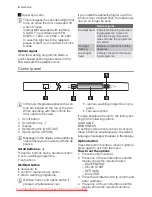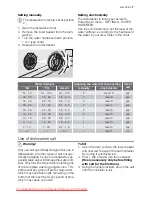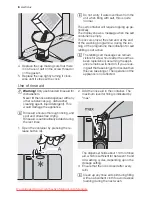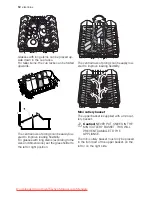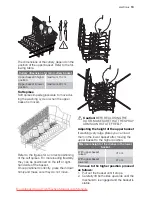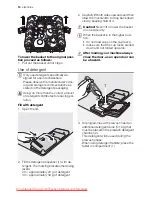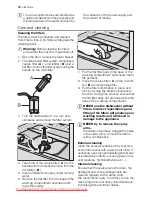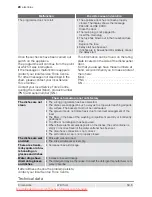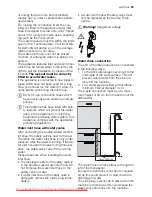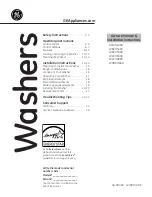
According to the finish and drying results ob-
tained, adjust the dose of rinse aid by means
of the 6 position selector (position 1 minimum
dosage, position 6 maximum dosage).
The dose is factory set in position 4.
Increase the dose if there are drops of water
or lime spots on the dishes after washing.
Reduce it if there are sticky whitish streaks
on the dishes or a bluish film on glassware or
knife blades.
The rinse aid container will require topping up
periodically.
The display shows a message when the rinse
aid container is empty.
This happens only at the start and at the end
of the washing programme; during the run-
ning of the programme the indication for rinse
aid refilling is not active.
Daily use
• Check if it’s necessary to refill with dish-
washer salt or rinse aid.
• Load cutlery and dishes into the dishwash-
er.
• Fill with dishwasher detergent.
• Select a wash programme suitable for the
cutlery and dishes.
• Start the wash programme.
Helpful hints and tips
Sponges, household cloths and any object
that can absorb water may not be washed in
the dishwasher.
• Before loading the dishes, you should:
– Remove all left over food and debris.
– Soften remnants of burnt food in pans
• When loading the dishes and cutlery,
please note:
– Dishes and cutlery must not impede the
rotation of the spray arms.
– Load hollow items such as cups,
glasses, pans, etc. with the opening
downwards so that water cannot collect
in the container or a deep base.
– Dishes and items of cutlery must not lie
inside one another, or cover each other.
– To avoid damage to glasses, they must
not touch.
– Lay small objects in the cutlery basket.
• Plastic items and pans with non stick coat-
ings have a tendency to retain water
drops; these items will not dry as well as
porcelain and steel items.
• Light items (plastic bowls etc.) must be
loaded in the upper basket and arranged
so they do not move.
electrolux
9
Downloaded from DishWasher-Manual.com Manuals




